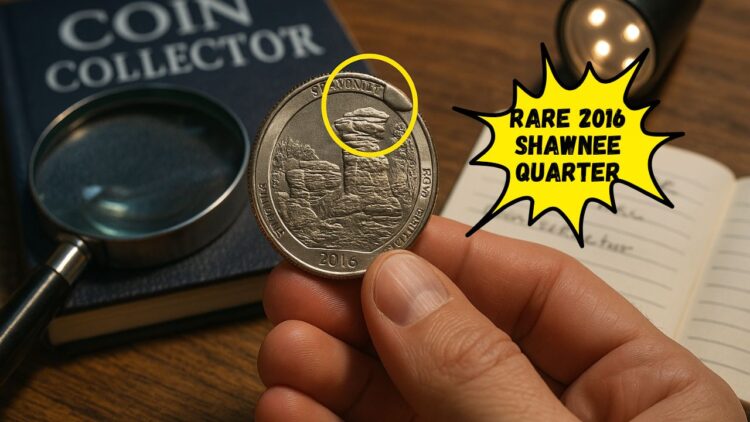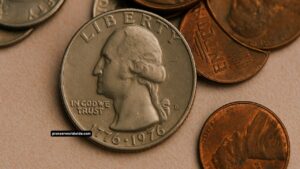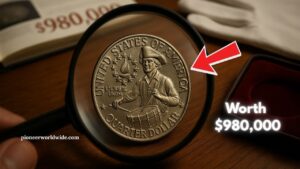In the world of coin collecting, certain errors can transform an ordinary coin into a highly sought-after treasure. One such example is the 2016 Shawnee National Forest Quarter from the America the Beautiful series.
A specific minting flaw, known as a reverse cud error, has made this coin exceptionally rare and valuable. In this guide, we’ll delve into the details of this error, how to identify it, and its significance in the numismatic community.
What Is a Reverse Cud Error?
A reverse cud error occurs when a portion of the coin’s die breaks off, leaving a void. During the minting process, metal fills this void, creating a raised, blob-like feature on the coin’s surface. This defect is typically located along the coin’s rim on the reverse side, often near the design elements.
Key Characteristics of a Reverse Cud Error
- Location: Typically found on the reverse side, near the rim.
- Appearance: Raised, blob-like protrusion resembling a “bump” or “bubble.”
- Cause: Result of a die break during the minting process.
- Rarity: Uncommon; increases the coin’s value significantly.
The 2016 Shawnee Quarter Design
The 2016 Shawnee National Forest Quarter features a design that includes:
- Camel Rock: A prominent rock formation resembling a camel’s head and hump.
- Red-Tailed Hawk: Soaring above the landscape.
- Shawnee National Forest: Located in southern Illinois, between the Ohio and Mississippi Rivers.
This design is part of the America the Beautiful Quarters Program, which honors national parks and sites across the United States.
How to Identify the Reverse Cud Error on the 2016 Shawnee Quarter
To determine if your 2016 Shawnee Quarter exhibits a reverse cud error, follow these steps:
- Examine the Reverse Side: Flip the coin to the reverse side.
- Inspect the Rim: Look closely at the rim for any raised, blob-like protrusions.
- Focus on Design Elements: Pay special attention to areas near the Camel Rock or the hawk’s wings.
- Use Magnification: Employ a magnifying glass or jeweler’s loupe to get a clearer view of potential errors.
Common Locations for the Reverse Cud
- Near the top of Camel Rock.
- Adjacent to the hawk’s wings.
- Along the lettering of “Shawnee.”
Value and Rarity of the Reverse Cud Error
The value of a 2016 Shawnee Quarter with a reverse cud error can vary based on several factors:
- Size of the Cud: Larger cuds are more noticeable and thus more valuable.
- Condition of the Coin: Coins in mint state (MS) condition are worth more.
- Market Demand: Collector interest can fluctuate, affecting prices.
Estimated Value Range
| Coin Condition | Estimated Value |
|---|---|
| Circulated | $50 – $100 |
| Uncirculated | $100 – $300 |
| MS65+ | $500 – $1,000 |
| MS70 (Perfect) | $3,800 (record sale) |
Note: Prices are estimates and can vary based on market conditions.
How to Authenticate and Grade the Coin
If you believe you’ve found a 2016 Shawnee Quarter with a reverse cud error, consider the following steps:
- Authenticate the Coin: Consult with a professional numismatist or send the coin to a reputable grading service like PCGS or NGC.
- Obtain a Grade: A higher grade can significantly increase the coin’s value.
- Preserve the Coin: Store the coin in a protective holder to prevent damage.
The 2016 Shawnee Quarter with a reverse cud error is a remarkable find for any coin collector. Its unique design, coupled with the rarity of the error, makes it a valuable addition to any collection. By carefully examining your quarters and understanding the characteristics of this error, you can identify potential treasures hidden in your pocket change.
FAQs
What is a reverse cud error?
A reverse cud error occurs when a portion of the coin’s die breaks off, leaving a void. During minting, metal fills this void, creating a raised, blob-like feature on the coin’s surface.
How can I identify a reverse cud error on a 2016 Shawnee Quarter?
Examine the reverse side of the coin, focusing on the rim and areas near the Camel Rock or hawk’s wings. Look for any raised, blob-like protrusions.
What is the value of a 2016 Shawnee Quarter with a reverse cud error?
The value can range from $50 to over $3,800, depending on the size of the cud, the coin’s condition, and market demand.




